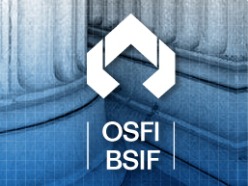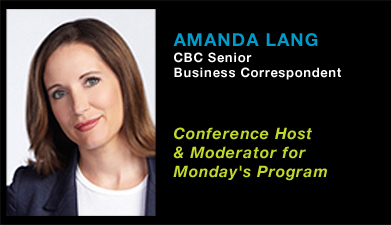By the time this blog is posted, I’ll be somewhere over the Pacific Ocean heading towards Sydney, Australia. My final destination is Adelaide, Australia. The purpose of the journey is to attend the Mortgage & Finance Association of Australia National Conference. It’s a long, a very long way, to go to attend a conference. By the time you read this blog, I will be well into my 22 hour flight and, I suspect, I will be going a little stir crazy. I’ve traveled a number of times to Europe, but an 8 hour flight to Europe is like a walk around the block compared to “going down under.” It’s a trip I always wanted to make, but I always found a reason to put it off. Must be the thought of been cramped in a tin can for 22 hours. But now, there was definitive time and reason to go. The MFAA is Australia’s equivalent of CAAMP. As much as I’m delighted to remove an item from my bucket list, going to Australia, the primary purpose of the visit is to represent CAAMP, and to go for my own personal development.
Canada and Australia are similar in many ways; specifically as it relates to the mortgage industry, an oligopoly exists in both countries, but the big difference is the disappearance of mono-lines in Australia. That was a result of the credit crisis of 2008, or as the Aussie’s like to say, the GSS (Global Shit Storm). The mortgage industry in Australia changed significantly post-2008. As mentioned, mono-lines became a footnote in the annals of the mortgage lending history in Australia. Given limited competition, broker commissions where significantly reduced. The four major banks in Australia now control 90% of the broker market share. The banks imposed proficiency exams on brokers to do business with them, at a cost of $750 to write the exam. The major banks took an equity position in some of the larger broker house’s in Australia, and they exercise their influence and control by way of board seats. Yet, for all the challenges the Australian broker market has faced since the GSS, they still control a 40% market share. That’s what I find fascinating. The Canadian broker market came out relatively unscathed after 2008, and yet broker market share in Canada is not growing. The data would suggest that broker market share in Canada is actually contracting; so what is it about Australian broker market that enables them not only maintain their market share but actually grow it? That’s going to be the first question I ask of any stakeholder in Australia. I hope to garner some insights and to see if there’s some practical application to our market, given examples from Australia.
What I’m really looking forward to is talking to lenders and brokers who fully embrace a trailer fee model. Brokers and lenders in Australia are vested and fully committed to this model. So what I hope to gleam is, how did they get there? I believe the trailer fee model is now accepted by the broker community in Canada. It’s no longer viewed as the boogieman or the great unknown. In large part this is due to Merix’s commitment towards this compensation model, and it pioneering of the trailer fee model. Many lenders talked about in the past but Merix actually did it. I commend all the broker lenders in Canada that have created a hybrid of the Merix model. Lenders in Canada can call them renewal fees if they like but the fact is prior to Merix, lenders were not paying on renewal. My hope is that every lender jumps on board and helps to create future value for mortgage brokers in Canada. Who knows, maybe one day Aussie brokers and lenders will ask us, how did you do it?
Until next time
Cheers
Not long ago CAAMP’s Chief Economists, Will Dunning, said to me that economists base their forecasts on their personality.

All of us at some point have said, “I can’t believe what I just saw”. One example is if the Toronto Maple Leafs ever win the Stanley Cup. The conscious mind would not to be able to accept something so outrageous and beyond the realm of possibility. It is so much easier to believe in something that you never see – like all things religious. Religion is purely based on faith and actual scientific evidence is, well, scarce to say the least. Yet, people believe. So how is it that something as simple as economic data makes some economists disbelievers? That’s exactly what’s happening today; they see the data but they don’t believe it.
I find it fascinating that economists are saying Canada’s job creation numbers should not be taken at face value. Over the last two months, Canada has added more jobs than in any other two-month period in the last 31 years, with approximately 140,500 jobs added in March and April. Also, more full time permanent positions were added, meaning more Canadian workers will benefit from employer healthcare benefits. That’s fantastic news! It’s reason to celebrate! But no, economists are suggesting the employment numbers are not sustainable and our job numbers are uneven. As for sustainability, no kidding! But I guess if they say that often enough they’ll eventually be right. As for the numbers being uneven – Alberta, for example, has the hottest job market today, while Ontario lags behind the rest of the country – that’s another debate all together. Ontario’s most recent numbers are clear evidence that the province needs real leadership. What was once the economic engine of Canada has now been reduced to the nation’s punch line. Ontario aside, there’s great news for the rest of the country. Quebec? Everyone was under the impression that the province was headed for another recession. Low and behold, the job numbers in Quebec are rising. Companies are looking for experienced workers – evident in the fact that more people aged 55 and older are being hired. Youth unemployment is still an issue, and Canada’s jobless rate ticked up a bit to 7.3%. That being said, Obama would kill for those numbers heading into the presidential elections.
Canada’s job figures appear to have caught many economists by surprise. The question is why? How can those in “the know” now claim that these numbers came out of nowhere. Of course, they can make that claim, but if they continue to get caught off-guard, their future predictions will fall on deaf ears.
Not long ago CAAMP’s Chief Economists, Will Dunning, said to me that economists base their forecasts on their personality. They’re either optimists or pessimists, and their forecasts will reflect their normal disposition. Based on their recent track record, maybe there should be a third category –Illusionist.
Until next time.
Cheers
 I suspect everyone in our industry is familiar or has some basic understanding of OSFI’s responsibilities. The Office of the Superintendent of Financial Institutions is an independent agency of the Government of Canada, and the agency reports directly to the Minister of Finance. OSFI’S mandate? Simply stated OSFI’S role is to ensure that Canadians have confidence in the financial system. Given what’s transpired in the rest of the word since 2008, I suspect Canadian confidence in our financial system has not waned, at all. Yet most Canadians wouldn’t know who or what OSFI is. Maybe that’s not a bad thing. Regulators in the US have come under heavy criticism for their role or lack thereof leading to the financial crisis of 2008. The criticism that regulators in the US have received over the last four years contributes to the erosion of consumer confidence. When regulators make headlines you know change is coming. Consumer confidence is the underpinning of any established economy. If consumers are concerned about their jobs, they don’t spend. If Canadians ever questioned the stability of our banking system, well, the net result could be cataclysmic.
I suspect everyone in our industry is familiar or has some basic understanding of OSFI’s responsibilities. The Office of the Superintendent of Financial Institutions is an independent agency of the Government of Canada, and the agency reports directly to the Minister of Finance. OSFI’S mandate? Simply stated OSFI’S role is to ensure that Canadians have confidence in the financial system. Given what’s transpired in the rest of the word since 2008, I suspect Canadian confidence in our financial system has not waned, at all. Yet most Canadians wouldn’t know who or what OSFI is. Maybe that’s not a bad thing. Regulators in the US have come under heavy criticism for their role or lack thereof leading to the financial crisis of 2008. The criticism that regulators in the US have received over the last four years contributes to the erosion of consumer confidence. When regulators make headlines you know change is coming. Consumer confidence is the underpinning of any established economy. If consumers are concerned about their jobs, they don’t spend. If Canadians ever questioned the stability of our banking system, well, the net result could be cataclysmic.
So what exactly is the responsibility of this shadowy agency that so few Canadian know about or even know of their existence?
1. Supervise institutions and pension plans whether they are in sound financial condition
2. To ensure that financial institutions are complying to law and supervisory requirement
3. To advise institutions of material deficiencies, and to require management and boards of said institutions to implement corrective measures
4. Create policy and procedures designed to mitigate risk
5. Monitor and evaluate system-wide or sectoral issues that may impact institutions negatively
We’re getting firsthand experience as it relates to the fifth mandate. OSFI has significant concerns about the state of lending in this country and the risk posed to financial intuitions if current lending practices continued. Lending practices are being questioned and change is coming. What’s unknown is the degree of change. OFSI requested for CAAMP to respond to their draft guideline – B-20 Residential Mortgage Underwriting Practices and Procedures. CAAMP was grateful for the opportunity to respond to OSFI and once again it demonstrates that CAAAMP has become the guardian of our industry. CAAMP’s response was well measured and focused.
For a copy of a CAAMP’s full response, please click here.
As a teaser, CAAMP’s response focused on the following lending practices and procedures;
1. Loan Documentation
2. Debt Service Change –Additional Assessment Criteria
3. Loan to Value Ratio
4. Down Payment
5. Home Equity Lines of Credit
It is clear that OSFI is reviewing every aspect of lending and specifically the fundamentals of credit decisions. As an industry it would be naïve to believe that change would have no impact on our business. Change is coming and one has to hope that change is measured and based on facts. Over reaching changes to lending policies poses a risk. Confidence in the financial system is critical. However, if Canadians don’t believe that banks want to lend prudently, they’ll respond accordingly. There are different ways for Canadians to lose confidence in the banking system. It’s not just about writing bad loans…it’s also about writing no loans.
Until next time,
Cheers.
Read More Add a Comment How many times have you heard, “it’s just an honour to be nominated“. What rubbish! If you’re going to be nominated for an award you want the hardware. A nomination gives you hope and the trophy is the validation. We all need, and like, the validation. Those who say it doesn’t matter are being disingenuous. Even if the sentiment is sincere why wouldn’t you want people’s efforts to be acknowledged? No one has ever won an award without the hard work of a lot of other people. When you win an award there’s many finger prints on the trophy.
How many times have you heard, “it’s just an honour to be nominated“. What rubbish! If you’re going to be nominated for an award you want the hardware. A nomination gives you hope and the trophy is the validation. We all need, and like, the validation. Those who say it doesn’t matter are being disingenuous. Even if the sentiment is sincere why wouldn’t you want people’s efforts to be acknowledged? No one has ever won an award without the hard work of a lot of other people. When you win an award there’s many finger prints on the trophy.
I take great pride in the fact that CAAMP won the award for Conference of The Year at the Canadian Event Industry Awards. If you consider all the conferences that are held in Canada each year, the trophy is a significant accomplishment. Mortgage Forum 2011 was a huge success, and that was confirmed by the survey results and from the numerous comments I received from attendees. CAAMP took a gamble by changing up the conference, and the changes were well received. The affiliation with the Art of Sales ensured that the line-up of speakers surpassed all previous conferences. Tuesday turned into a full day of speaker sessions and it was impressive to see an audience of 2,220. I remember standing at the back of the hall during one of the speaker sessions and saying to myself, “damn, it actually worked”. When you make changes you never know how the changes will be received until you go live. There’s a big divide between concept and execution. The devil is in the detail, and the CAAMP staff didn’t miss a single detail. I’ve got proof of that…it’s a nice shiny trophy.
 So how does CAAMP top last year’s conference at Mortgage Forum 2012 in Vancouver? It’s not going to be easy but they’re up for the challenge. They’ll do what they always do, and that means they’ll put on a hell of a show. CAAMP announced this week that Amanda Lang, CBC’s senior business correspondent, is returning as host of the Mortgage Forum 2012. That’s a fabulous start. What’s also returning is CAAMP Comedy Fest; we’re in the process right now of signing a contract with the headliner. I can’t say who it is yet but he’s gut busting funny. There’s a good chance that you’ve seen him on the TV talk-show circuit or one of his HBO comedy specials. Many of the speakers for the Tuesday’s portion of the conference have committed, and the theme for Tuesday is the Art of Marketing. CAAMP will announce the speaker line-up in short order. Trust me, you’ll be impressed.
So how does CAAMP top last year’s conference at Mortgage Forum 2012 in Vancouver? It’s not going to be easy but they’re up for the challenge. They’ll do what they always do, and that means they’ll put on a hell of a show. CAAMP announced this week that Amanda Lang, CBC’s senior business correspondent, is returning as host of the Mortgage Forum 2012. That’s a fabulous start. What’s also returning is CAAMP Comedy Fest; we’re in the process right now of signing a contract with the headliner. I can’t say who it is yet but he’s gut busting funny. There’s a good chance that you’ve seen him on the TV talk-show circuit or one of his HBO comedy specials. Many of the speakers for the Tuesday’s portion of the conference have committed, and the theme for Tuesday is the Art of Marketing. CAAMP will announce the speaker line-up in short order. Trust me, you’ll be impressed.
It’s disclosure time. I’m the conference chair for Mortgage Forum 2012, and I have a vested interest in the success of this conference. Anytime you attach your name or reputation to something you want to make its successful. So I’ll use every tool at my disposal to ensure success, up to an including, bravado, hype, spin and hyperbole. Shooting from the lip is easier to do when you know there’s a group of highly killed individuals doing all the heavy lifting behind the scenes to ensure Mortgage Forum 2012 is the best conference we’ve ever had. Is that spin on my part? There’s an easy way to find out….see you at Mortgage Forum 2012 in Vancouver.
Until next time
Cheers
Read More Add a Comment
 There are signs that spring is really here. No, it’s not the lack of snow on the ground or the unusually mild temperatures we’ve had here in Ontario. It’s definitely not about the Leafs playing hockey beyond the regular season. My understanding is that’s when the Stanley Cup play-downs or playoffs or whatever the hell they call it begins. My memory fails me as I get older, and it’s hard to remember what hockey in the spring time is like in this city. It’s not about a new baseball season which begins in one week. No, it’s spring time because it’s budget time…isn’t that exciting boys and girls?
There are signs that spring is really here. No, it’s not the lack of snow on the ground or the unusually mild temperatures we’ve had here in Ontario. It’s definitely not about the Leafs playing hockey beyond the regular season. My understanding is that’s when the Stanley Cup play-downs or playoffs or whatever the hell they call it begins. My memory fails me as I get older, and it’s hard to remember what hockey in the spring time is like in this city. It’s not about a new baseball season which begins in one week. No, it’s spring time because it’s budget time…isn’t that exciting boys and girls?
Our “Daddy Premier” in Ontario gave everyone some bad news this week, especially if you’re one of the 1.2 million public servants in this province. The Liberal government announced a wage freeze for all public servants, and they don’t mind biting the hand that voted for them. According to the Ontario Finance Minister Dwight Duncan, the government will legislate a wage freeze if one cannot be negotiated. There’s 4000 labour agreements in place today. This has job action, strikes, rallies and public demonstrations written all over it. The gauntlet may have been thrown down in the spring but this will carry forward and ensure a winter of discontent for us here in Ontario. Never mind that all the austerity measures are necessary, and that the minority Liberal government had no choice but to  address the fiscal disaster which is the Ontario budget, the opposition will skewer the Liberals over this budget. That being said the Liberal government doesn’t believe the opposition has the stones to defeat the government over this budget, resulting in an election. This is a high stakes political game of chicken, and I suspect the Liberals are counting on the support of the NDP. I think a deal’s done already. The Liberals have changed their mind on reducing corporate income to tax to 10% by next year. The new budget states that corporate taxes will be frozen at 11.5% through 2017-2018. That’s reason to celebrate in NDP world, and it’s not as if the Liberal and NDP haven’t openly discussed being bed buddies in the past. Sure, those discussions have been at the federal level but I suspect their provincial siblings have taken note. The next part of the process is for the liberals to stand up and pat themselves on the back for being responsible and doing what’s necessary to fix the problems we have in Ontario. Really? That’s like an arsonist taking credit for helping to put out a fire he started.
address the fiscal disaster which is the Ontario budget, the opposition will skewer the Liberals over this budget. That being said the Liberal government doesn’t believe the opposition has the stones to defeat the government over this budget, resulting in an election. This is a high stakes political game of chicken, and I suspect the Liberals are counting on the support of the NDP. I think a deal’s done already. The Liberals have changed their mind on reducing corporate income to tax to 10% by next year. The new budget states that corporate taxes will be frozen at 11.5% through 2017-2018. That’s reason to celebrate in NDP world, and it’s not as if the Liberal and NDP haven’t openly discussed being bed buddies in the past. Sure, those discussions have been at the federal level but I suspect their provincial siblings have taken note. The next part of the process is for the liberals to stand up and pat themselves on the back for being responsible and doing what’s necessary to fix the problems we have in Ontario. Really? That’s like an arsonist taking credit for helping to put out a fire he started.
I was reviewing all the cuts, wage freezes and cancelled programs when I came upon one initiative in the budget to increase revenue that made laugh out loud. The Liberal government plans on opening up 25 new and larger liquor stores in Ontario every year. Here’s what that means, “as a government we’re financially and morally bankrupt, we’re fiscally incompetent, we couldn’t organize a one car funeral…so come on Ontario…let’s get hammered”.
There’s another budget that we’ll be hearing about today, tomorrow and the day after and so on.
The Federal Budget will be introduced today, and there’s been a fair bit of speculation as to what it may contain. I’ll refrain from adding anything more to the speculation, and wait for the actual details before commenting any further. You may not be aware of this but Jim Murphy, CAAMP President, was invited to Ottawa by the Finance Department to participate in the budget lock-up process. These invited guests are sequestered in a room, and they get to review budget, spending plans, back ground papers and the actual speech before it’s delivered. It’s also an opportunity for Jim to speak to senior government officials who will also be present. It really is an honour for CAAMP, and Jim, to be invited to the sneak preview. For those of you who may have missed CAAMP’s most recent message about their government relations effort, I encourage you to watch the video below:
Until next time.
Cheers